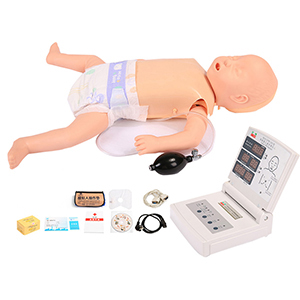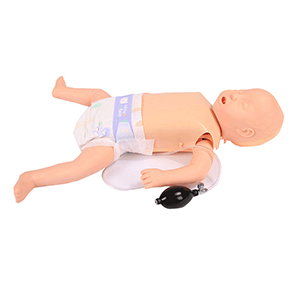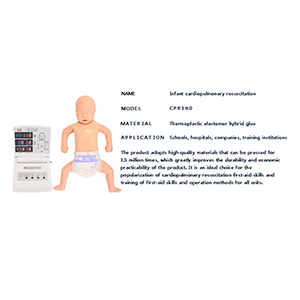03-01-2025
ADA MED SUPPLY LIMITED
Advanced infant cardiopulmonary resuscitation Simulators have become an important tool in medical training in recent years, especially in first aid training. For the general reader, the core function of these devices is to help trainers simulate and practice infant cardiopulmonary resuscitation (CPR) operations. However, the question is, how close are these simulators to the real first aid environment?
1. Authenticity of physiological feedback
Modern advanced infant cardiopulmonary resuscitation simulators have a highly realistic physiological feedback system. For example, these simulators can simulate a baby's heart rate, breathing, blood pressure and other vital signs. When performing CPR, the operator feels feedback similar to that of an actual baby, such as the force with which the chest rebounds or the temperature changes in the skin on the face. This highly restorative feedback helps trainees better understand how to respond to emergencies during training.

Advanced Infant CPR resuscitation simulator
2. Interactivity and responsiveness
Modern SIMS can not only provide physiological feedback, but also respond to manipulation. For example, if CPR is not done correctly, the simulator may not produce an effective heartbeat recovery, and the participant can adjust the method through immediate feedback. This interactivity greatly enhances the effectiveness of the training, allowing the trainees to master key skills in repeated operations.
3. Data analysis and real-time evaluation
Some advanced simulators are also equipped with data analysis systems that are able to collect data and evaluate it in real time as students operate. This data helps the trainer understand how the trainee is performing during CPR, such as depth, frequency and rhythm of compressions. This analysis not only helps students identify problems, but also provides personalized training recommendations to ensure training effectiveness.

4. Market trends and equipment popularity
According to MarketsandMarkets research, the global CPR simulator market has shown significant growth over the past few years and is expected to grow by more than 7% by 2029. This shows that with the continuous improvement of technology and the increase of market demand, more and more first aid training institutions and hospitals have begun to rely on advanced infant cardiopulmonary resuscitation simulators to improve the quality of training.

Sum up
Overall, advanced infant CPR simulators have been able to provide a training environment that is relatively close to the real thing. While they can't completely replace the actual first aid experience, they are very close to reality in terms of providing physiological feedback, real-time assessment and interactive training. These simulators not only provide a safe and efficient training environment for first aid trainers, but also continue to promote the standardization and precision of infant CPR training.